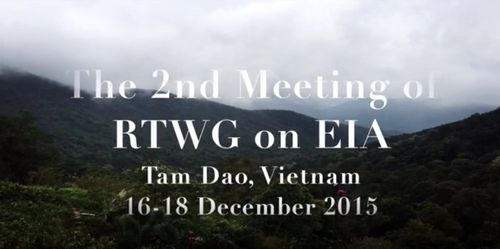In Vietnam, many forests are being effectively managed by the most active guardians - the local communities - thanks to their cultural norms: the forest left by their ancestors is also the place where the forest god resides. It’s the traditional regulations and laws imprinted through the traditional practice of worshiping the sacredness of the gods that guide the community to manage and protect these forests for hundreds and thousands of years. However, there are challenges ahead that hinder them from playing their role.

Video: Public Participation in EIA
Government agencies and civil society organisations from across the Lower Mekong region got together at the 2nd Meeting of Regional Technical Working Group on Environmental Impact Assessment (RTWG on EIA) during 16-18 December 2015 in Tam Dao, Vietnam.
The group endorsed an action plan to improve public participation in EIA. The action plan helps the 25-member working group, supported by the USAID Mekong Partnership for the Environment (MPE) project as they develop regional EIA guidelines over the next 18 months. The goal is to improve the implementation of EIA and reduce anticipated negative impacts of development projects. Support for the working group is a key part of the project’s work in holding multi-stakeholder dialogues and enhancing the community involvement in the development of infrastructure projects such as dams, mines and industrial zones. The project co-facilitates the group with the Asian Environmental Compliance and Enforcement Network (AECEN).
MPE had a chance to interview the RTWG members, including Mr. Trinh Le Nguyen – Director of People and Nature Reconcillation (PanNature), on their opinions about Public Participation in EIA, national experiences and their visions towards the work of the RTWG on EIA.
